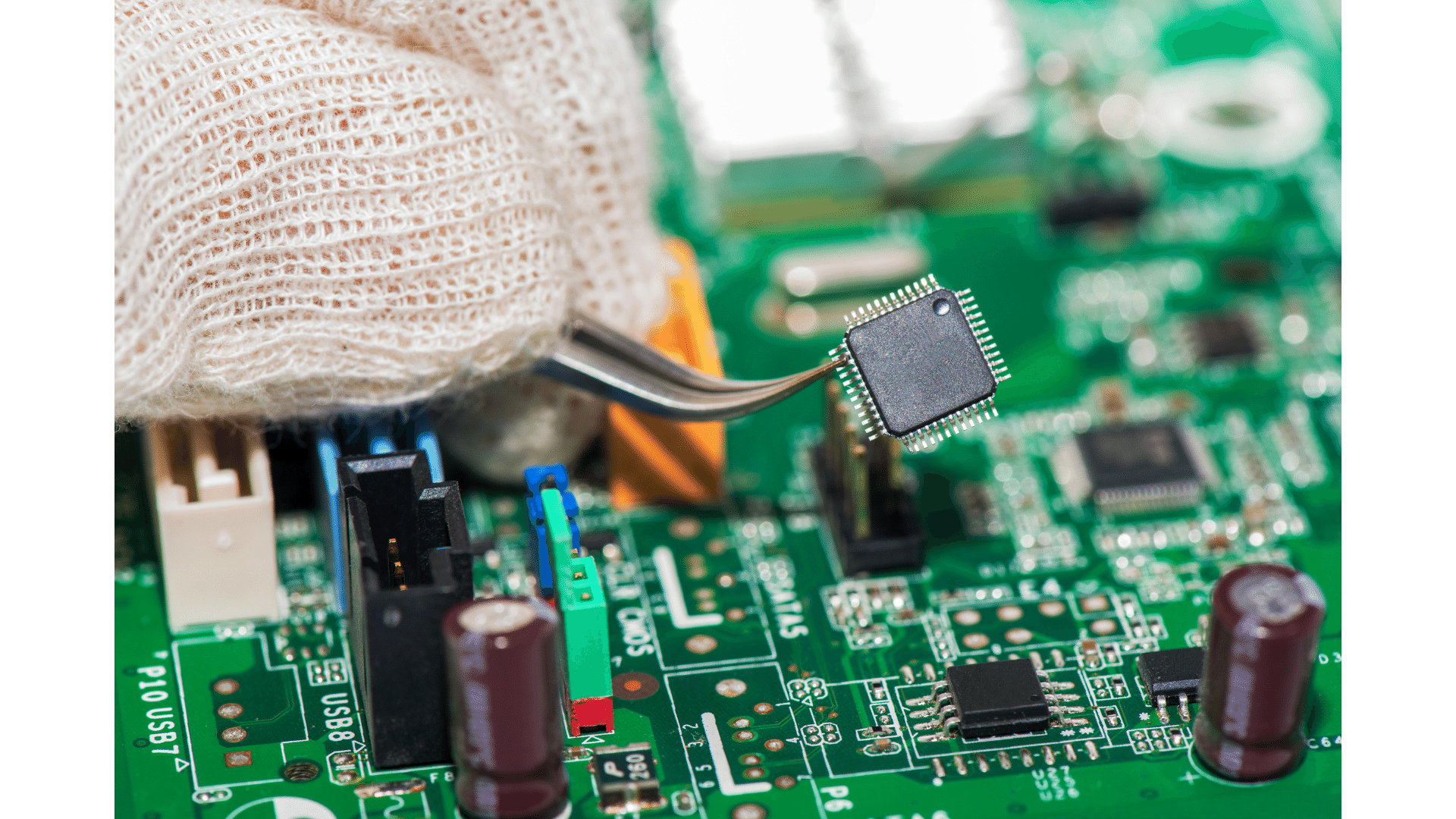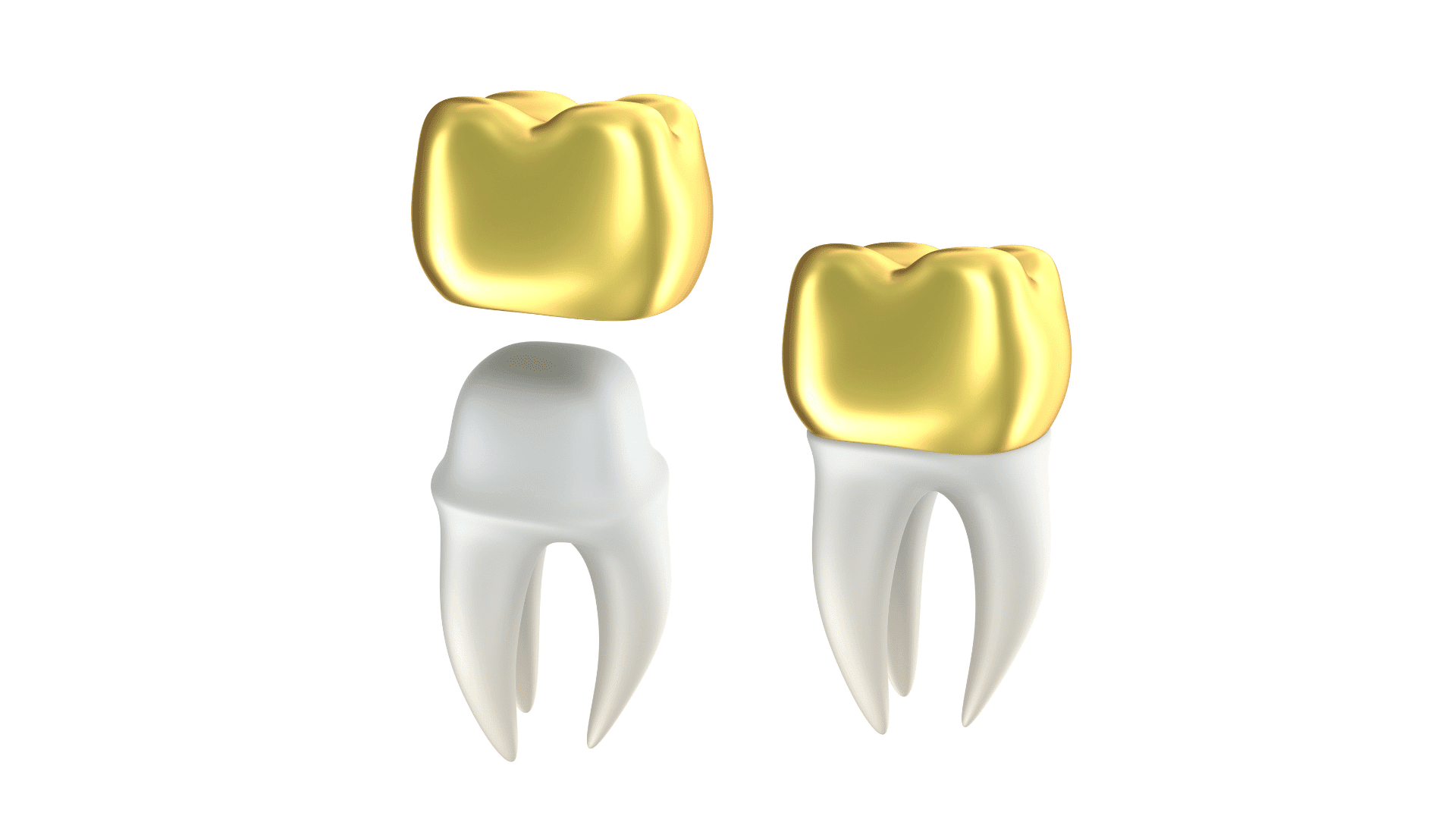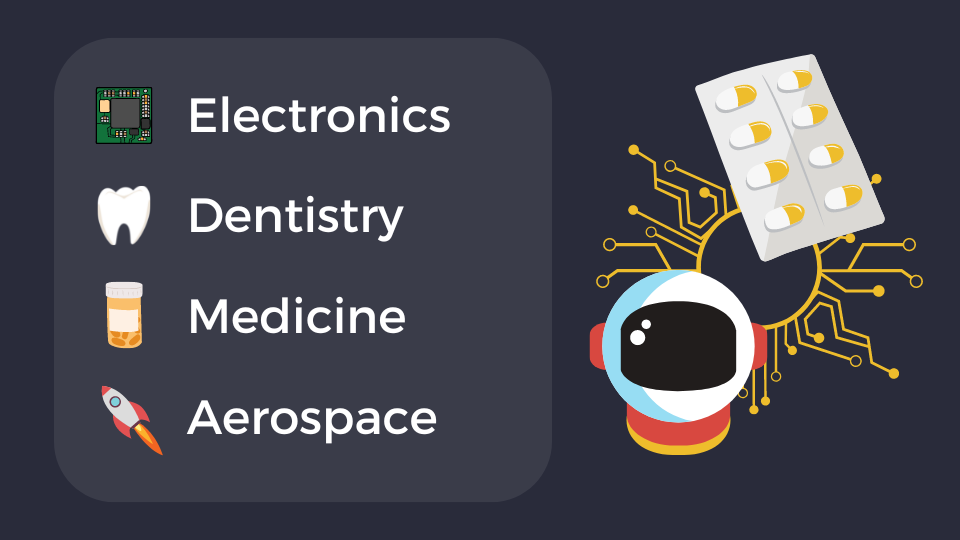We are all familiar with gold’s visual beauty, which made it the precious metal of kings and emperors for thousands of years. Today, this illustrious yellow metal is no longer reserved for royalty. You rely on gold every day, as does anyone who takes advantage of modern electronics, dentistry, medicine, and…space travel?
Electronics
Gold is highly conductive and resistant to corrosion, making it a handy building material for electronic devices. “Conductive” means electric current easily flows through it. Engineers use gold to manufacture transistors, diodes, connectors, resistors, cables, and switches in the devices we use every day. If you are currently using a computer or smartphone, you are probably relying on this versatile yellow metal!
Gold’s conductivity makes it an ideal material for transmitting electrical signals. Printed circuit boards (PCBs) often rely on gold to connect the various components of an electronic device. During the production of PCBs, engineers deposit thin layers of gold onto the surface of the board via a process called electroplating. The gold is soldered to the surface of the board to create the final electrical connections.

Our world basically runs on semiconductors. High-quality semiconductors typically feature thin wires made of gold, as well as thin gold films applied to the surface of the device. Semiconductors conduct or insulate electricity depending on specific conditions. They are an essential building block of everything from digital clocks, remote controls, computers, and smartphones to solar cells, (which convert sunlight into electricity) and LED lights (which convert electricity into light).

Dentistry
Gold is biocompatible, meaning it is not rejected by the body. Gold can have prolonged contact with living tissue without causing adverse reactions, unlike other metals such as nickel, copper, lead, and mercury. This property, along with its durability and malleability, makes gold an important element in dentistry.
Gold can withstand the forces of chewing and biting, making it a perfect material for the production of dental crowns and bridges. Dentists place dental crowns over a damaged or decayed tooth to restore its shape, size, and function. A dental bridge replaces one or more missing teeth by attaching artificial teeth to the natural teeth.

Gold is also used for dental fillings. A dental filling is a material used to fill a cavity in a tooth that has been damaged by decay. Gold fillings are typically more expensive than other types of fillings, such as composite resin or amalgam, but are longer-lasting and less prone to wear and tear.
In addition to these uses, gold’s strength and flexibility make it a popular choice for braces and retainers. Orthodontists use gold wires and brackets to straighten teeth and correct dental misalignments.
Medicine
Biocompatibility comes in handy for medical applications as well. Throughout history, doctors used gold to treat various ailments such as leprosy, joint pain, smallpox, and rheumatoid arthritis. These applications date back to ancient China, India, and Egypt.
Today, doctors use gold compounds such as auranofin and aurothioglucose as a form of immunosuppressive therapy to reduce inflammation and suppress the immune system in patients with autoimmune diseases.
Gold compounds have also been shown to effectively treat certain types of cancer. Tiny gold nanoparticles are capable of delivering chemotherapy drugs to specific areas in the body, which helps target drugs to cancer cells and improves the effectiveness of the treatment. Gold compounds have antimicrobial properties, making them useful in the treatment of wound infections and other conditions.

Aerospace
Gold is a soft and ductile metal, but can withstand high loads and extreme temperatures. These properties, along with its reflectivity and thermal conductivity, make it a critical element in space technology.
Aerospace engineers use gold to manufacture thermal coatings, plates, and mirrors that need to withstand high speeds and harsh conditions. For example, the James Webb Space Telescope features a 21-foot mirror plated in gold. Gold coatings improve the performance of aerospace components while protecting them from corrosion. Astronauts’ helmets have a very thin layer of gold to protect their eyes from solar radiation.

Aerospace engineers also use gold to produce electrical connectors, switches, bearings, and springs for aerospace vehicles. Gold is an important part of many brazing alloys, a sort of metallic glue that joins adjacent metal parts under high temperatures.
Secure gold savings, without the excessive fees
From semiconductor devices to jewelry to its role in the global monetary system, gold has proven to be an indispensable valuable resource for a wide range of industries.
This article comes from our internal team of researchers and technical experts. Vaulted gives modern investors access to physical gold ownership at the best cost structure in the industry. With personal advising from industry experts and access to premier precious metals strategies, Vaulted is the key to life-long financial prosperity. Start protecting your portfolio today.
As always, thank you so much for reading – and happy investing!











